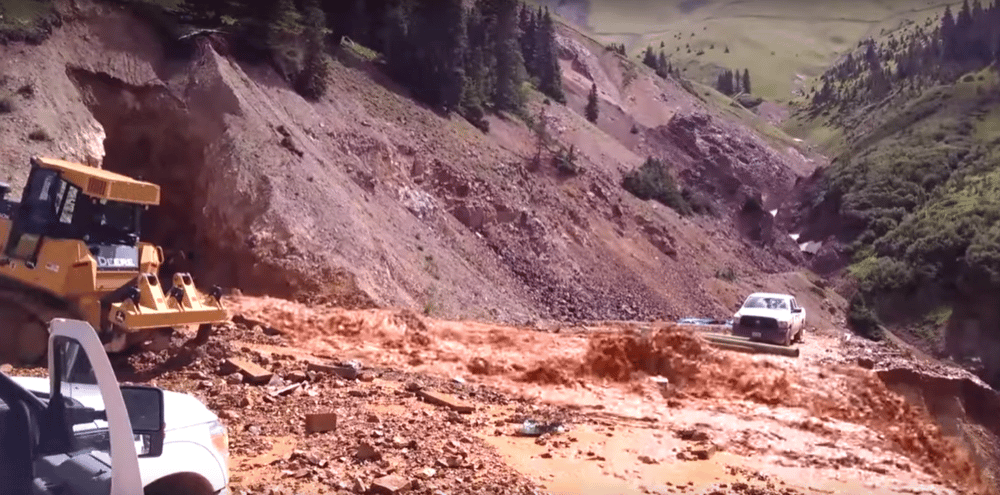This video from the Environmental Protection Agency seems to show the first moments of a disaster that would put millions of gallons of polluted mine water into the Animas River.
"Get outta here?" one guy says.
"What do we do now?" another asks forlornly.
We're still learning more about that day in August.
Investigations (including a criminal one) are ongoing, but the EPA just released a report on the spill, which happened Aug. 5.
Gold King operated in southwestern Colorado from the 1800s until 1922. It was leaking long before the accident – about 690,000 gallons of metal-heavy water per day – and earlier cleanups didn't do much. A water-treatment plant stopped working in 2004, just a couple years after it was installed.
On the day of the spill, the EPA's contractors were trying to assess the condition of the mine, thinking they were digging above the tunnel. The EPA team thought that the tunnel was only "partially full of water."
Instead, they found a pressurized flood of orange water.
Then the pollution reached the rivers.
The EPA acknowledges in its report that "valid concerns" were raised about how fast the agency told downstream governments about the leak.
Ultimately, the spill crossed three states and three Indian reservations. forcing the temporary shutdown of several public water supplies.
Over the next five days, the EPA would build a series of ponds to treat the water escaping the ponds, and a few months later a temporary treatment plant in Gladstone, Colo.
It was horrible – but it had basically been happening for years.
About 3 million gallons escaped the mine. That's how much the mine would have leaked in just four of its normal days.
The amount of metal pollutants that spilled out was about equal to "the mass of metals carried in one day of high spring runoff," the EPA claims.
That's not to downplay the scale of the disaster. Instead, it shows that southwestern Colorado has been suffering for years from the aftermath of mining.
Still, an assessment earlier this year found that the Animas River did not have dangerous levels of arsenic, lead or mercury.
The EPA has promised $29 million in response.
That money will go toward stabilizing the main, treating its runoff and tracking environmental effects. The agency also has proposed a plan that it says would bring more oversight and planning to mine sites.
But this isn't anywhere near over. Besides the criminal investigation mentioned above, the EPA and the state of Colorado both face lawsuits, including one filed by New Mexico, the Durango Herald reports.
Beyond that, there are scores of abandoned mining sites that pose a similar threat. The 48 sites around Gold King Mine (near Silverton) leak about 5.4 million gallons per day.
Throughout Colorado, at least 230 abandoned mines are leaking into waterways, the Denver Post reported. About 150 haven't even been checked since the 1990s, according to the Post -- and the EPA estimates it could cost more than $20 billion to clean up all of the inactive mines in the West.














